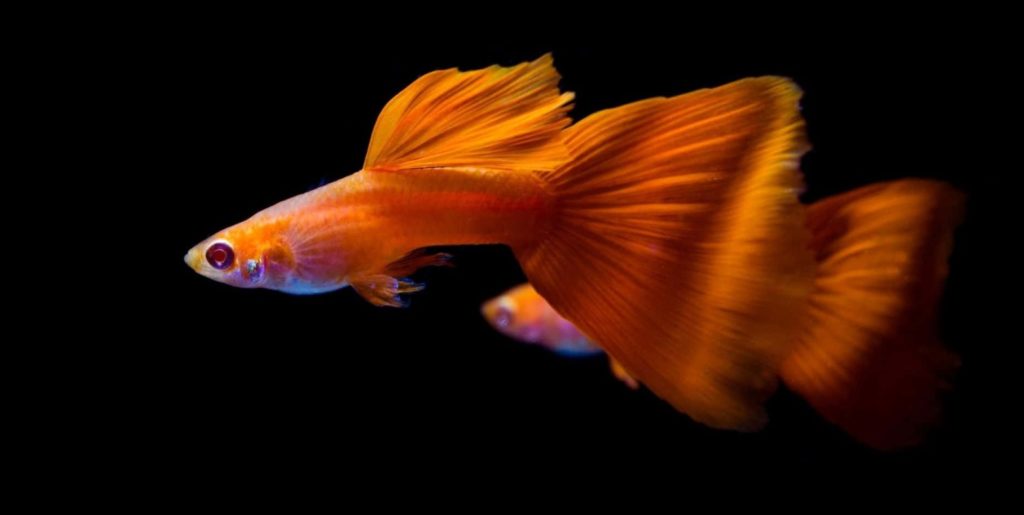Natural Range
Guppies are native to South America and the West Indies.
Maximum size and longevity
Sizes can vary from 3 to 5 cm.
Water quality
· Temperature: 24°C – 26°C.
· pH: 7.0-7.5
· General hardness: 250-300 ppm (if you start to get sick, doubling this dose can help).
Guppies need clean, oxygen-rich water, make sure tanks aren’t overcrowded, well ventilated, and filters cleaned regularly.
Make sure all biological filters are working properly, ensuring that no ammonia or nitrite is present.
Feeding
An active fish, guppies use a huge amount of energy and need to be fed at least 3 times a day with a variety of foods including dry, fresh, frozen or live food.
Guppies are surface eaters and will readily accept most prepared foods. However, they should be given a high-vegetable diet and a dry food like Spirulina should be used occasionally.
Compatibility
They are suitable for a community pond densely planted with other peaceful fish. It’s best to choose tankmates with slightly alkaline hard water needs in your aquarium.
Avoid crowding with larger or aggressive species that will nip them because of their colorful tails.
Male guppies can continually “harass” female guppies if kept together, this can be avoided in commercial situations by stocking males and females in separate tanks. This will stop continuous playback.
Color and varieties
While there are many beautiful wild forms of livebearers, guppies have been selectively bred around the world to produce a huge variety of colors, body and fin shapes.
Sexing
Viviparous fish have the common trait of giving birth by swimming young (ovoviviparous), rather than by laying eggs like most other fish. To achieve this, males have a modified anal fin called a gonopodium which is used to facilitate internal fertilization of the female. Once fertilized, the eggs mature inside the mother’s oviduct. The eggs then hatch
internally and give “birth” to the resulting offspring soon after.
Guppie fingerlings are about 7 to 10 mm long at birth and are probably the most easily bred species on finely ground dry food and do not require special food like most other species when they start feeding.
Males and females are usually easily distinguished as males have a smaller body with brightly colored tails, females also have a dark “gravid” patch in the anal region.
Its ease of reproduction means that it is the first species that many hobbyists start breeding.
General information
Guppies are probably the most popular livebearer among both aquarium owners and advanced breeders.
It has become a species of fish for hobbyists with selective breeding resulting in many varieties of spectacular coloring and fins. These fish are generally robust and tolerant of a wide range of aquarium conditions – for this reason they are often recommended for beginners.
However, due to intense selective breeding, guppies can be more difficult to keep than their wild ancestors.
For this reason, it is important to try to match the tank conditions to their requirements of slightly harsh and alkaline conditions, otherwise they can become weak and prone to bacterial infections. Will be prone to bacterial disease in soft water.
Interestingly, guppies introduced into empty home aquariums, where the water is well aged and there is plant life and algae to graze on, can transition from the previously described hard water with little or no ill effect. This is attributed to the higher levels of stress the fish are exposed to under commercial conditions, such as fish constantly entering and leaving the ponds, more handling and higher densities.
